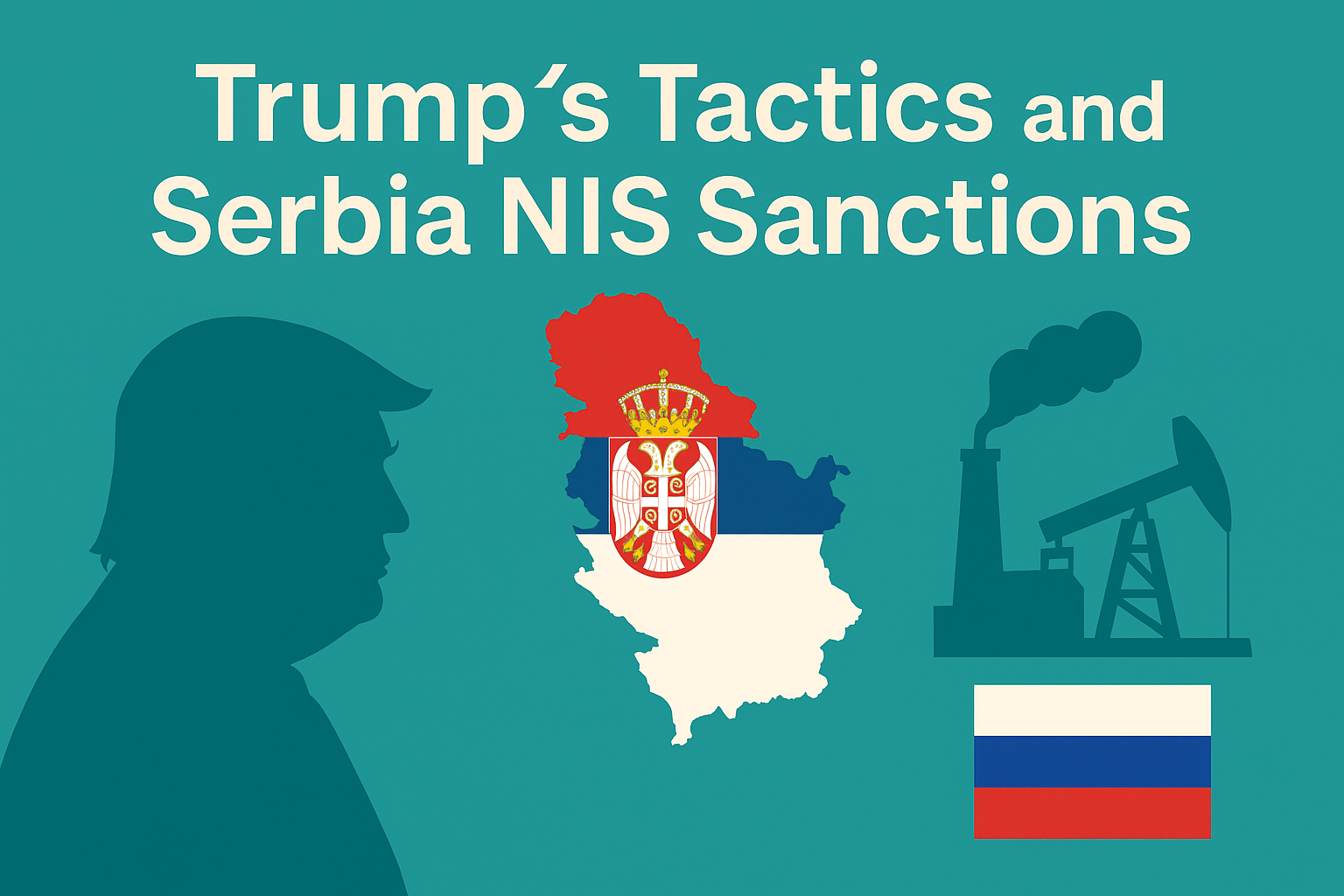Wrote By:Global Economist 2025/10
1. Introduction
In 2025, the United States designated Serbia’s main oil company, NIS (Petroleum Industry of Serbia), as a sanctions target. NIS operates Serbia’s only refinery and has been effectively controlled by Russia’s state-owned Gazprom Neft.
The sanctions were initially scheduled to take effect in January 2025, but after several postponements and partial applications, they moved toward full enforcement in October. Still, short-term waivers have repeatedly been granted for crude oil shipments and the fulfillment of existing contracts.
This report analyzes President Trump’s deal-oriented tactical approach and examines the strategic significance of the sanctions from Russia’s perspective.
2. Trump’s Tactics: Turning Sanctions into a “Deal”
Trump’s foreign policy is characterized by a combination of tough rhetoric and flexible compromise—a “deal-making strategy.” This pattern is evident in the sanctions on Serbia.
Gradual Pressure
- Sanctions were not applied in full immediately; instead, Trump used incremental delays and exemptions.
- This sent a dual message: “You have time, but sanctions are inevitable.”
Negotiation Leverage
- Sanction waivers were offered as bargaining chips.
- This created room for Serbia to demonstrate reduced dependence on Gazprom through share restructuring or pro-EU signals.
Managing Domestic and International Audiences
- At home, Trump could project a tough stance against Russia, appealing to his political base.
- Internationally, he could portray himself as a “responsible stabilizer,” avoiding a supply cliff and easing frictions with the EU.
3. Serbia’s Dilemma
Serbia seeks to advance its EU accession talks, yet remains heavily dependent on Russian energy.
- Economic reality: The Pančevo refinery (run by NIS) is the backbone of domestic fuel supply. If operations stop due to sanctions, economic disruption is inevitable.
- Political constraint: A segment of Serbian society remains strongly pro-Russian, making it politically difficult for the government to pivot fully to the West.
- Diplomatic pressure: If Serbia prioritizes EU accession, cutting Gazprom’s control becomes unavoidable.
Trump’s “sanctions delay strategy” gives Serbia more time while simultaneously forcing it to make a choice.
4. Strategic Meaning from Russia’s Perspective
For Russia, Serbia represents the last pro-Russian foothold in the Balkans—geopolitically critical within the EU–NATO environment.
Maintaining Influence
- Through Gazprom Neft’s control of NIS, Russia retains leverage over Serbia’s economy and energy supply.
Exploiting Sanctions
- U.S. pressure can be reframed as “Western bullying,” strengthening pro-Russian sentiment domestically.
- The narrative of “America punishing Serbia” plays well in Russia’s propaganda efforts.
Serbia as a Sanctions-Evasion Hub
- As a non-EU member, Serbia has value as a conduit for financial and material flows.
- Share transfers or front companies allow Russia to maintain effective control while appearing compliant.
Long-Term Risks
- If Serbia fully severs Gazprom’s stake and prioritizes EU accession, Russia’s influence would sharply decline.
- To counter this, Russia is likely to pursue “nominal concessions” while preserving substantive control.
5. Future Scenarios
Short Term (by end of 2025)
- Sanctions tighten gradually; exemptions such as JANAF pipeline deliveries are reduced.
- Serbia prioritizes domestic stability while negotiating “limited waivers” with the U.S.
Medium Term (first half of 2026)
- If Serbia accelerates EU accession, formal measures such as phased buyouts of Gazprom shares or trust transfers may be introduced.
- Russia will likely use subsidiaries or third countries to sustain influence.
Long Term (2026 and beyond)
- Depending on EU accession talks, Serbia may face a decisive fork: integration with the West or continued alignment with Russia.
- For Russia, losing Serbia would represent a major setback in its Balkan influence.
6. Conclusion
President Trump’s sanction strategy on Serbia is a deal-oriented phased approach designed to:
- Avoid immediate supply shocks,
- Transform sanctions into bargaining chips, and
- Maximize pressure on Serbia to distance itself from Russia.
From Russia’s perspective, the sanctions are both a strategic setback and a propaganda tool. While they highlight U.S. pressure, they also provide Moscow an opportunity to frame the West as coercive, while deploying schemes to preserve influence.
Ultimately, the outcome of these sanctions will hinge on how far Serbia goes in genuinely severing Gazprom’s control and how credibly it advances toward EU accession.


